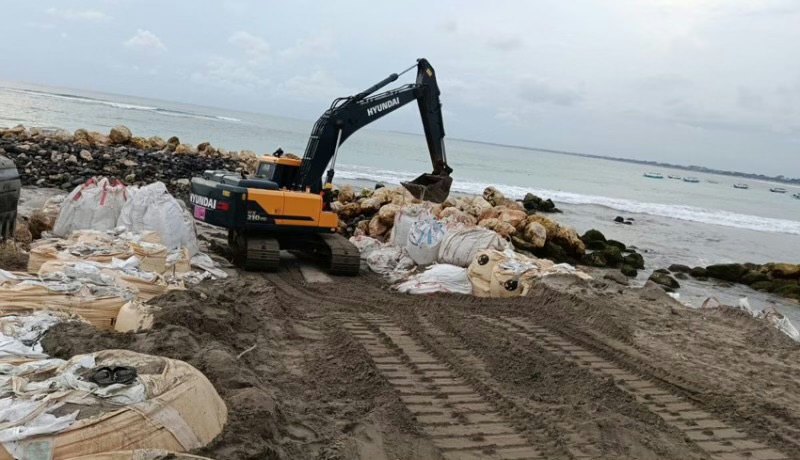Kuta Beach is one of the most renowned on Bali. It became the starting point for the island's tourist boom, with many beginning their surfing journey here. This beach is loved for its gentle water entry, golden sands, and long, even waves. However, in recent years, Kuta has become a symbol of the fight against erosion, as the shore has been receding by 10 meters each year. If this process isn't halted, by 2030, this famous resort could turn into a narrow strip of sand.

An attempt to save the beach was made in 2006, but it failed: the added sand was washed away by the waves within a few months. Now, Indonesia, with Japan's support, has launched the Bali Beach Conservation Project Phase II (BBCP 2) — a project costing 785.92 billion rupiahs (≈ $50 million), which is considered the 'last chance' for Kuta.
The collaboration between the Indonesian government and the Japan International Cooperation Agency is divided into two phases. The first involves reinforcing 5.5 km of the shore in Candidasa and restoring the coral reefs there. In the second phase, four new breakwaters will be constructed, and 610,000 m³ of sand will be added to the Kuta-Legian-Seminyak area. This amount of sand is enough to fill 240 Olympic-sized swimming pools.
To ensure the effects of the reconstruction last for years rather than just two months, significant attention will be paid to the order of actions: building the breakwaters first, then reinforcing the shoreline, and only afterward, adding the sand. The minimum goal is to complete the breakwaters by November 2025, when the rainy season begins.
Surfers need not worry about losing a good spot. Local authorities promise that post-reconstruction, Kuta will remain a paradise for wave enthusiasts — the northern part of the beach will remain untouched.
As for tourists, the golden sands of Kuta will remain accessible even during the work. However, parts of the area will be fenced off, and in some places, the view will be marred by construction equipment.
Despite possible inconveniences, the work on the beach is crucial. If the shoreline disappears, around 50,000 people working in this area's tourism sector might lose their jobs. Furthermore, restoring the coral and sand will help bring back sea turtles to the beach, which have nearly vanished over the past 20 years.
The beach reinforcement project in Kuta and Candidasa is set to be a test case. If the outcome meets expectations, similar methods will be applied in Denpasar, Jimbaran, and other areas.
Timeline:
- April-May 2025 - removal of old breakwaters, delivery of limestone.
- June-October 2025 - installation of new structures.
- November 2025-March 2026 - addition of sand.
- End of 2026 - official opening of the renovated beach.
You can add one right now!